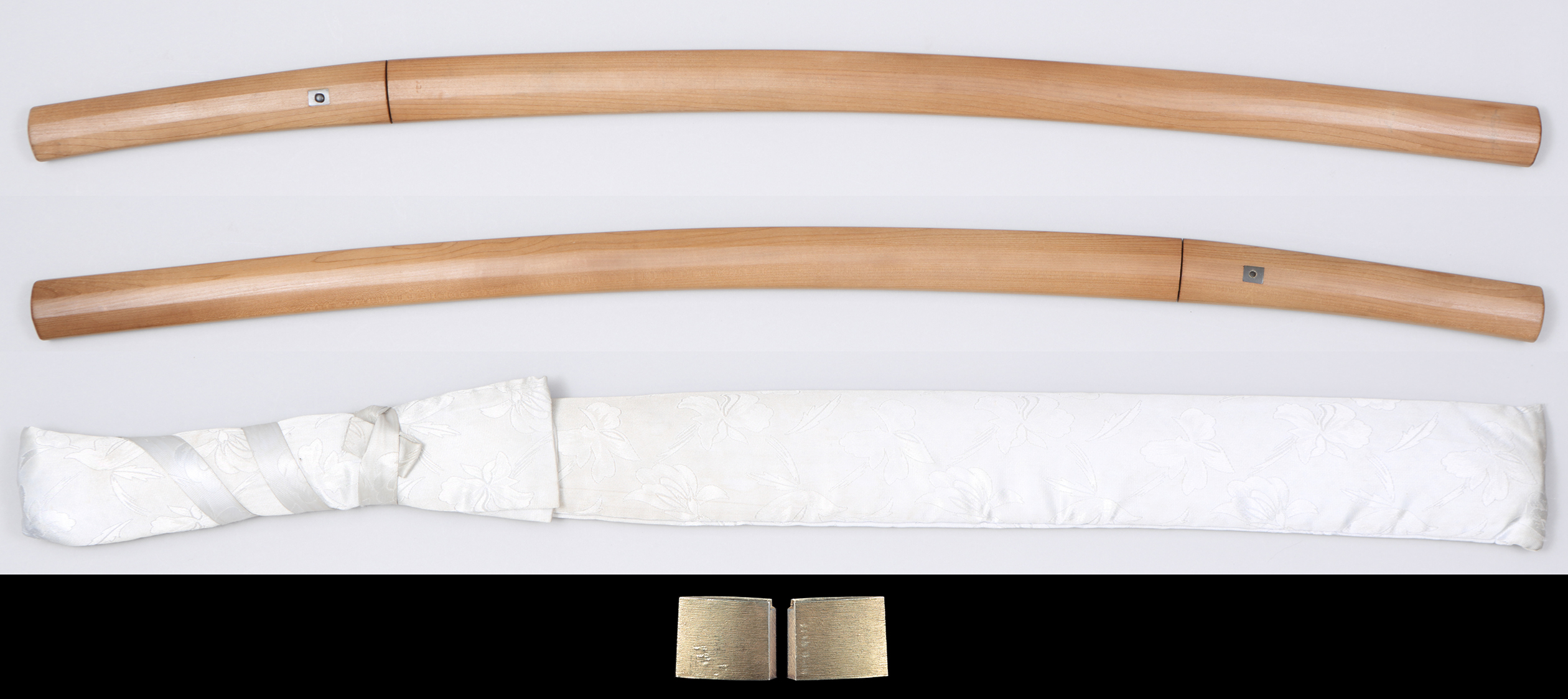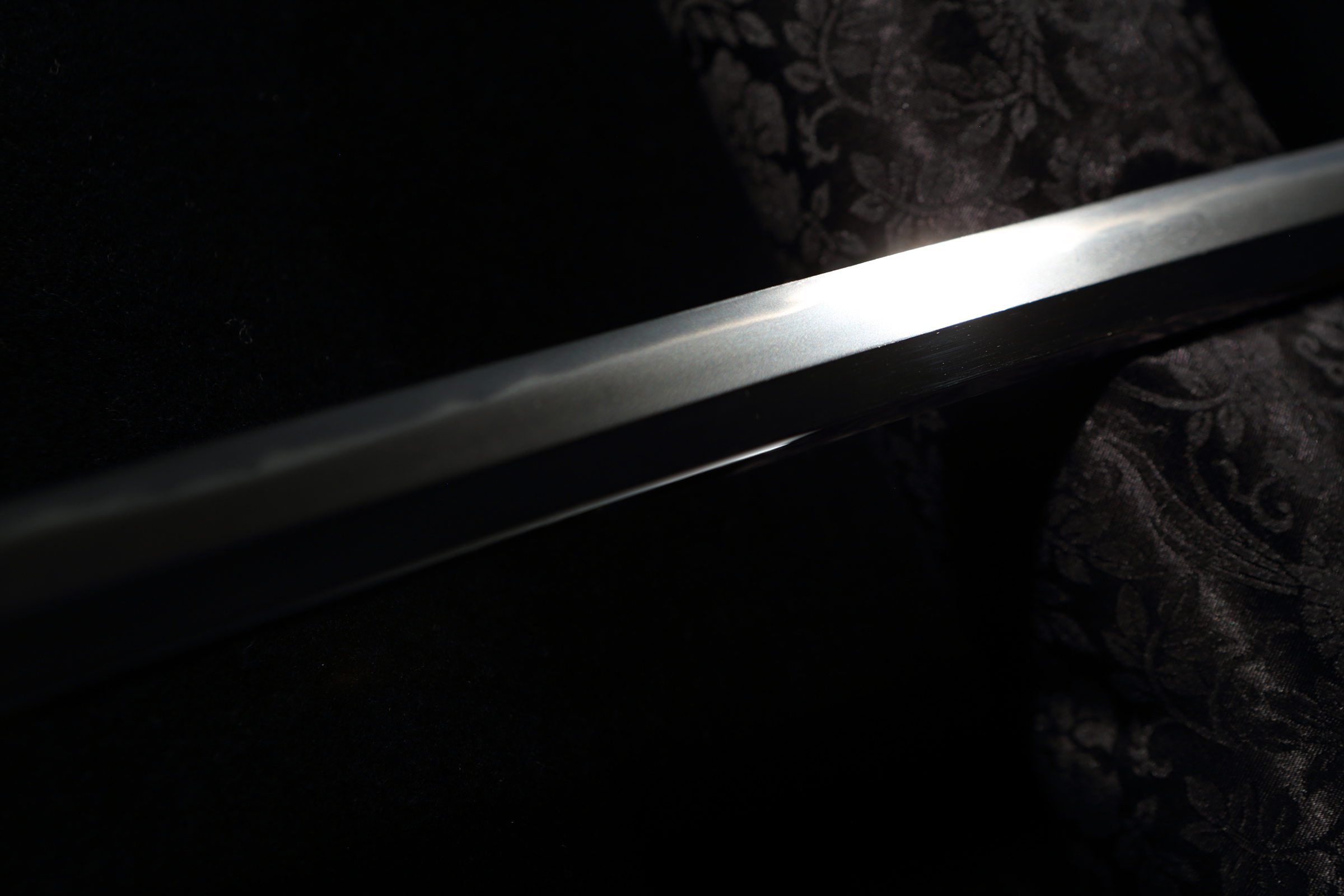[ Feature ]
Form : Shinogi-zukuri. Iori-mune. Both mihaba and kasane are ordinal. There some diffrences between moto-haba and saki-haba. Moderate sori attached. Ko-kissaki form.
Nakago : Ubu. Yasurimes are kiri. Saki is kuri-jiri. One hole.
Jigane : Ko-itame-hada well grained. Jinie attached.
Hamon : Chu-sugu-ha. Ko-gunomes mixed. Ashis appeared.
Boushi : It runs in sugu. It runs in ko-maru form.
[ Highlight ] The year 1933 is regarded as "a landmark year in the history of modern swords". The Manchurian Incident in September 1931 and the First Shanghai Incident at the beginning of 1932 were followed by the expansion of warfare on the continent, and two forges were established around the same time in order to address the situation where the quality and quantity of swordsmiths had declined compared to the previous generation. One was established by a member of the House of Representatives, Kurihara Hikosaburo, in his own residence in Akasaka Hikawa-cho, which was also the former residence of Katsu Kaishu, while the other was established by the Japanese Sword Forging Association in a corner of the premises of the Yasukuni Shrine, a separate government-run shrine. The two forges were not the sole activities of swordsmiths, but worked together in an organised manner to revive swordsmanship, and both share the same result in that they both maintained authentic swordsmithing and trained swordsmiths in response to the demands of the times. The year 1933 thus became the base for modern sword making, prior to the resumption of sword making as 'art swords' after the gap following the defeat of the war.
This work is one of the Yasukuni swords produced for the purpose of "forging Japanese swords of national style and helping to maintain the military swords of mainly officers of the army and navy and their counterparts", and is the work of 52-year-old swordsmith Kajiyama Yasunori. The blade has a straight edge sugu-ha with gunomes mixed blades, with a bright distinction against base iron jigane. His real name was Kajiyama Tokutaro, and he lived in Nigata-cho, Kamo County, Hiroshima Prefecture. He studied under his father, who was a swordsmith, and then under Yokoyama Sukeyoshi. On 8 July 1933, together with Miyaguchi Yasuhiro, he was one of the first technical members of the Nihon-to tanren Kai, and received a certificate from the Minister of Army, Araki Sadao, at the completion ceremony of the forging yard tanre-jo, where he also performed the Uchihajime ceremony. The Japanese Sword Forging Association was made up of three schools: the Yasuhiro school of the Kasama Shigetsugu lineage, the Kajiyama Yasutoku school of the Yokoyama Sueyoshi lineage and the Ikeda Yasumitsu school of the Ikeda Kazuhide lineage. Swordsmiths from different schools established advanced techniques through friendly competition under the guidance of Haku Kozu, a National Treasure examiner, Oyamada Shigezo, the Imperial Sword Officer of the Imperial Household Agency, Yamaoka Shigeatsu and Kurata Shichiro, examiners of the Central Sword Society, with Bizen Nagamitsu and Kagemitsu of the late Kamakura period as their ideals.
(Reference : "Yasukuni Sword - The Ultimate in Tradition and Beauty" Tom Kishida, 2003, Yuuzankaku)
[ Conditions ] Excellent.





